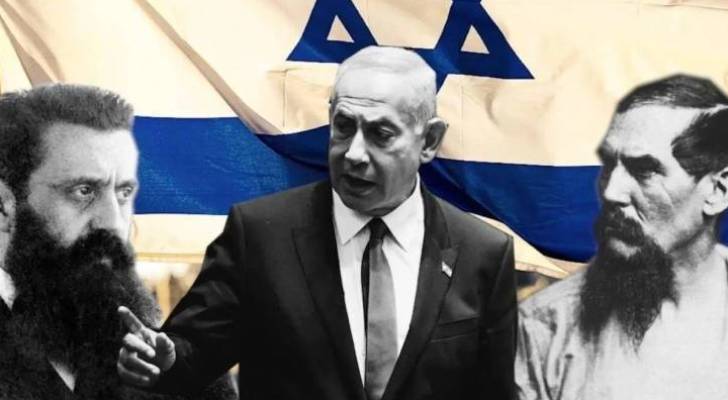Secrets of Netanyahu and Likud’s Zionist vision: Then and now
Benjamin Netanyahu, the longest-serving prime minister of the Israeli Occupation, along with his Likud party, has long served as the cornerstone of the Zionist right. To understand their political strategy, one must trace the ideological roots of Likud and examine how Netanyahu has shaped the political and territorial reality over decades.
Roots in Revisionist Zionism and the “Iron Wall” doctrine
Likud's ideology stems from Revisionist Zionism, a movement founded by Ze'ev Jabotinsky in the 1920s. Its core principles include:
- Claim to “Greater Israel”: Rejection of any partition of historic Palestine, advocating full Jewish sovereignty over all land between the Jordan River and the Mediterranean.
- The “Iron Wall” doctrine: Jabotinsky believed Arabs would never willingly accept Zionism, and only overwhelming military force could compel them to submit.
- Rejection of territorial compromise: Any concession on land was seen as betrayal of the Zionist project.
This ideology was passed down to the Herut Party, founded by Menachem Begin in 1948, which became the foundation of the Likud bloc in 1973.
Netanyahu: A product of Revisionist Zionism
Netanyahu’s worldview was shaped by his upbringing. His father, Benzion Netanyahu, was a historian and secretary to Jabotinsky. This background instilled in him a deep distrust of Arabs and a belief in the existential nature of the conflict.
In his book A Place Among the Nations, Netanyahu argued that the conflict is not about borders but about Arab rejection of a Jewish state, reinforcing his belief in the need for permanent military superiority and control over the West Bank, especially the Jordan Valley.
Turning ideology into policy: Netanyahu in power
First term (1996–1999): Undermining Oslo
Netanyahu campaigned against the Oslo Accords. While he did not cancel them outright, he:
- Expanded settlements, increasing tensions.
- Imposed strict preconditions on Palestinians, stalling negotiations.
- Signed limited agreements like the Wye River Memorandum (1998), which brought no lasting solution.
Second era (2009–2021): Cementing the status quo
Netanyahu entrenched his vision through major policies:
- Conditional acceptance of a demilitarized Palestinian state (Bar-Ilan speech, 2009), with impossible demands like Palestinian recognition of a “Jewish state.”
- Accelerated settlement building, rendering a two-state solution nearly impossible.
- 2018 Nation-State Law, defining the entity as exclusively Jewish and stripping collective rights from non-Jewish citizens.
- Opposition to Iran, lobbying against the 2015 nuclear deal and encouraging US withdrawal.
- Abraham Accords (2020): Normalization deals with Arab states that bypassed the Palestinian cause.
Current term (2022–present): The far-right in full control
Netanyahu returned to lead the most right-wing government in the occupation’s history. Key developments include:
- Judicial overhaul: A controversial plan to weaken the Supreme Court, viewed as the last check on government overreach in settlement expansion and land confiscation.
- Ongoing war on Gaza (since 2023): Following the events of October 7, Netanyahu launched a campaign to “eliminate Hamas,” rejecting any role for the Palestinian Authority in Gaza and insisting on indefinite “Israeli” military control, consistent with his long-term security doctrine.
From ideology to reality
Netanyahu and Likud’s plans are not temporary political strategies, they reflect a deeply rooted ideology based on historical entitlement, military dominance, and total rejection of Palestinian sovereignty.
Through decades of settlement expansion, normalization deals, and strategic control over the West Bank and Gaza, Netanyahu has worked systematically to make the vision of Revisionist Zionism a reality on the ground.




